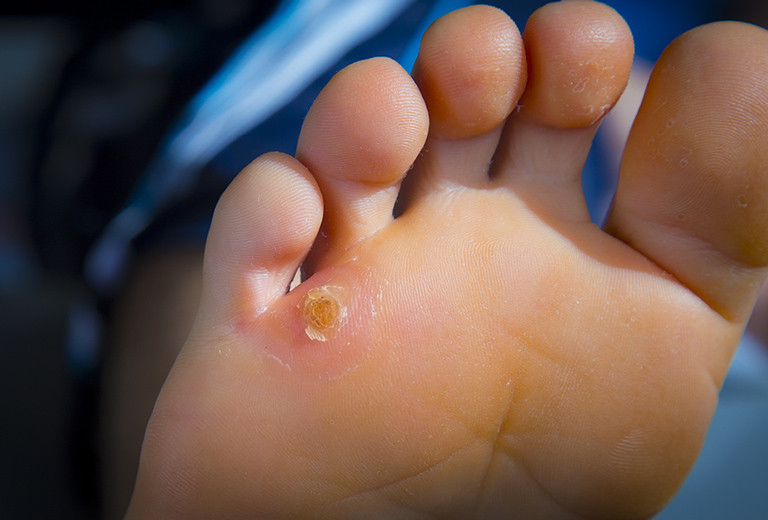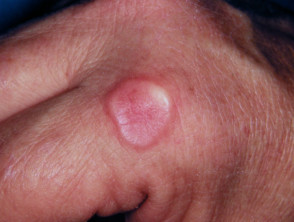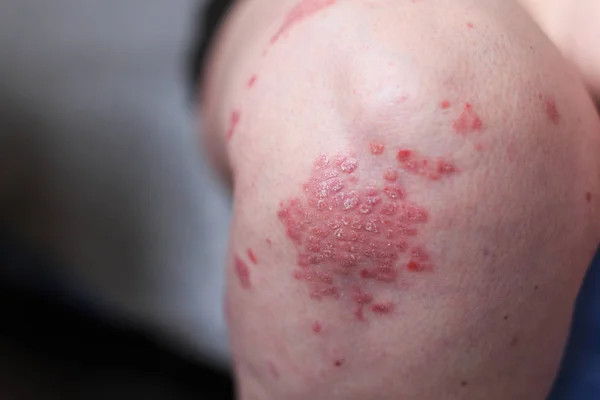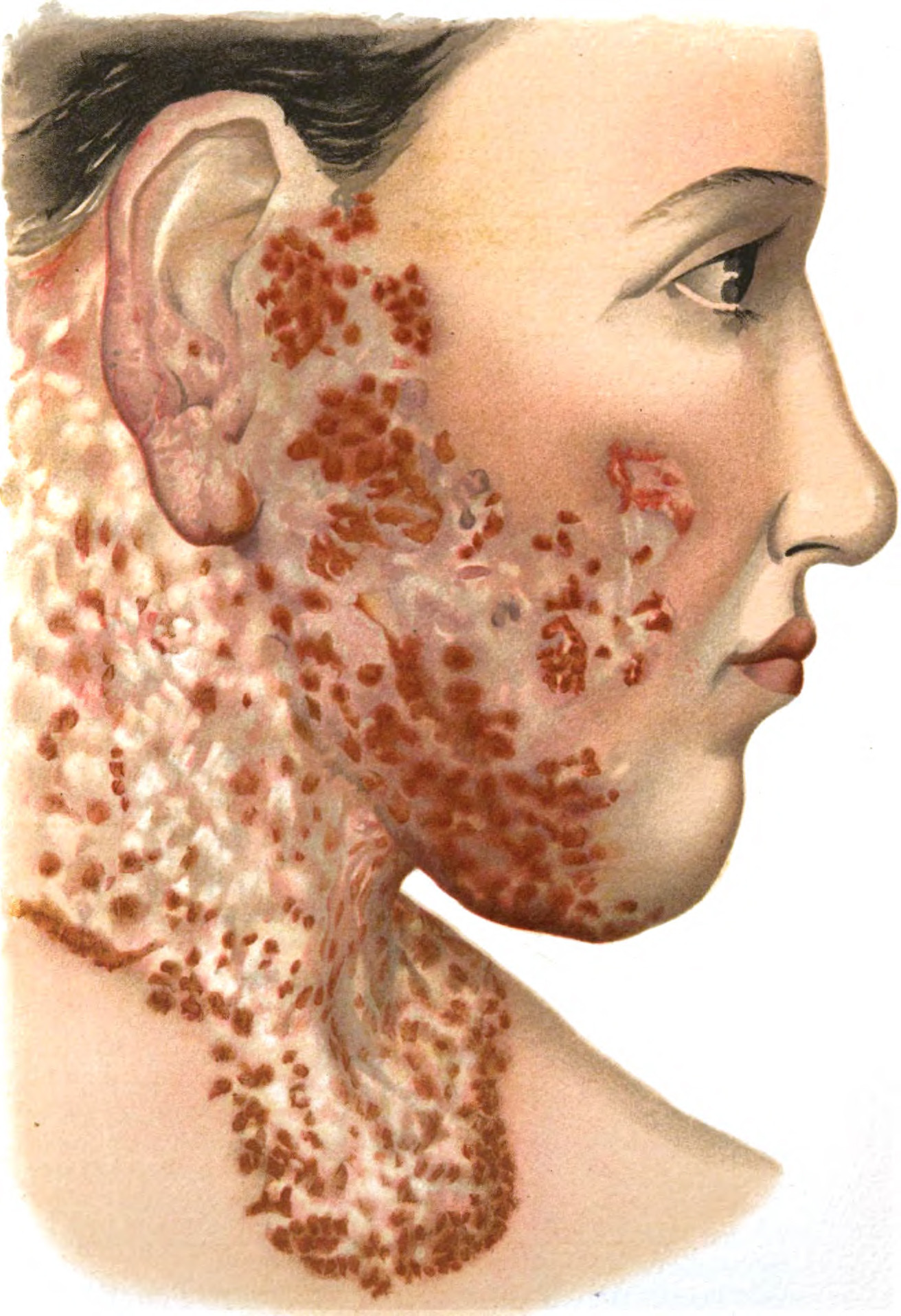Definition
A callus, commonly known as a corn, refers to a thickened area of skin resulting from pressure or friction on the skin's outermost layer. Corns are characterized by a defined thickening of the skin’s surface (epidermis) and contain a central core within the thickened region. This thickened area is usually broad, irregularly shaped, or widespread.
Calluses can develop anywhere on the body, but they most often form in areas subjected to frequent friction or pressure. Repeated friction on the skin's outer layer can act as a mechanical stressor, leading to callus formation. As a result, calluses are common on the feet, especially in areas where bones protrude and rub against shoes or on the fingertips.
Calluses frequently appear in older individuals. This is thought to be due to changes in the epidermis with age, leading to thinner, drier skin. Such skin becomes more susceptible to thickening as a protective response to repeated pressure or friction. Painful calluses are particularly prevalent among people over 65 in Western countries.
Treatment for calluses typically focuses on reducing symptoms and implementing lifestyle changes to prevent recurrence.
Causes
Calluses, especially on the feet, can result from friction or pressure associated with:
- Wearing shoes that are too tight or ill-fitting
- Misaligned foot bones
- Intense physical activity
- Extended periods of standing, walking, or running
- Poor posture when walking, such as putting excess weight on the inner or outer edges of the feet
Calluses on the hands may result from activities such as:
- Weightlifting
- Playing musical instruments
- Using household tools
- Tennis
- Gardening
- Other tasks that rely on the hands as the primary support
Repeated pressure on specific areas of the skin's outer layer can lead to hyperkeratosis, a protective response that thickens the skin in areas of frequent friction. However, hyperkeratosis can cause discomfort or pain if the callus core presses on underlying nerve structures.
Risk factor
Certain factors may increase the likelihood of developing calluses, including:
- Regular participation in sports
- Wearing ill-fitting shoes
- Frequent use of high heels
- Not wearing socks with shoes
- Foot shape abnormalities
- Failure to wear hand protection when working with tools
- Playing musical instruments regularly
- Employment requiring extensive use of hands
Women may be more prone to calluses, potentially due to wearing ill-fitting or narrow shoes. Additionally, people with diabetes are at risk for foot injuries, making them more susceptible to calluses if they experience frequent foot friction. Individuals with abnormal walking patterns are also at an elevated risk.
The most common areas for calluses are the soles, especially near the joints of the fifth toe and the space between the big toe and heel. This is thought to be due to repeated pressure on these areas in daily activities.
Symptoms
Calluses typically cause little to no pain. The affected skin may feel thick and hardened, usually located on the hands, feet, or other areas prone to repeated friction or pressure.
The surface of callused skin often appears yellowish, dry, and rough. If subjected to ongoing friction, the area may blister or even bleed over time. Additionally, the thickened skin area has reduced sensitivity to touch compared to surrounding skin.
Diagnosis
Callus diagnosis is generally based on clinical evaluation. Doctors can diagnose calluses through a specialized medical interview and physical examination by observing the appearance of thickened skin, commonly on the hands or feet. Typically, callus diagnosis does not require additional tests or laboratory work.
During the medical interview, the doctor may ask about:
- Symptoms experienced
- Daily activity patterns involving physical pressure or friction
- Type and fit of footwear, including shoes and socks
- Any home treatments attempted
If you have a history of calluses, inform your doctor. Details about when the symptoms first appeared can also aid in diagnosis and in determining the most suitable treatment plan.
Management
Treating calluses begins with identifying the underlying cause of friction or pressure. The primary approach to therapy often involves preventing repeated irritation in the affected area.
If you do not have health conditions that impair blood flow (such as diabetes), you may find relief with these steps:
1. Use Plasters or Pads
Over-the-counter pads can shield the area with the callus. Avoid nonprescription callus removers or medicated patches with salicylic acid if you have diabetes or circulatory issues, as these can irritate healthy skin and risk infection.
2. Soak Hands or Feet
Soaking your hands or feet in warm, soapy water helps to soften the callus, making it easier to reduce thickened skin.
3. Gently Thin Out Skin
After soaking, gently rub the callus with a pumice stone or washcloth to remove the outer layer of hardened skin. Avoid sharp objects, and do not use a pumice stone if you have diabetes.
4. Moisturize Regularly
Apply moisturizer to your hands and feet to keep the skin soft and reduce callus formation.
5. Wear Comfortable Shoes and Socks
Continue wearing cushioned, properly fitting shoes and socks until the callus improves.
In cases such as hammertoe, where toe deformities create pressure points on the foot, surgery might be considered to address the misalignment and reduce callus formation.
For activities that involve hand friction, like weightlifting or gardening, wearing gloves can minimize callus risk by protecting the skin from repetitive friction.
Complications
Callus complications are uncommon, but individuals with diabetes mellitus are more prone to infections in callused areas. Regular foot exams are recommended to detect infections early. If a callus becomes injured, prompt examination by a healthcare provider is advised to prevent complications.
Prevention
After recognizing risk factors, you can work to address those that can be improved. Consider these preventative steps:
- Use finger guards if you develop calluses on your fingers from writing.
- Wear specialized gloves for weightlifting.
- Use work gloves to prevent calluses from physical labor or gardening.
- For sports like baseball, opt for thick gloves to protect your hands.
- Moisturize your hands frequently, especially right after bathing.
- Ensure your shoes fit well and aren’t too tight or too small.
When to see a doctor?
Seek medical attention if you have diabetes mellitus and notice any of the following:
- Calluses or sores developing on your feet
- Calluses not improving with treatment
- Painful, red, warm, or pus-draining calluses
- Calluses that develop additional symptoms
In such cases, it’s recommended to consult with a dermatologist (Sp. KK) or dermatologist and venereologist (Sp. DV) who can conduct a detailed assessment and determine the best course of treatment.
Looking for more information about other diseases? Click here!
- dr. Yuliana Inosensia
University of Rochester Medical Center. Calluses and corns. May 2022. Available from: https://www.urmc.rochester.edu/encyclopedia/content.aspx?ContentTypeID=85&ContentID=P00271
Healthline. Calluses on hands. October 2020. Available from: https://www.healthline.com/health/calluses-on-hands
Medline Plus. Corns and calluses. August 2016. Available from: https://medlineplus.gov/cornsandcalluses.html
Medline Plus. Corns and calluses. May 2021. Available from: https://medlineplus.gov/ency/article/001232.htm
Al Aboud AM, Yarrarapu SNS. Corns. [Updated 2022 Apr 30]. In: StatPearls [Internet]. Treasure Island (FL): StatPearls Publishing; 2022 Jan-. Available from: https://www.ncbi.nlm.nih.gov/books/NBK470374/












